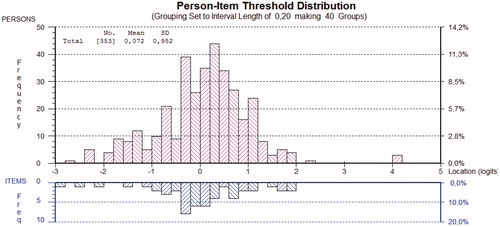Figures & data
Table 1. Model fit statistics for MDI items.
Table 2. Individual item fit for MDI items.
Figure 1. The MDI category probability curves for item 1 ‘feeling sad’ displaying disordered six-point response categories and corrected five-point response categories.



